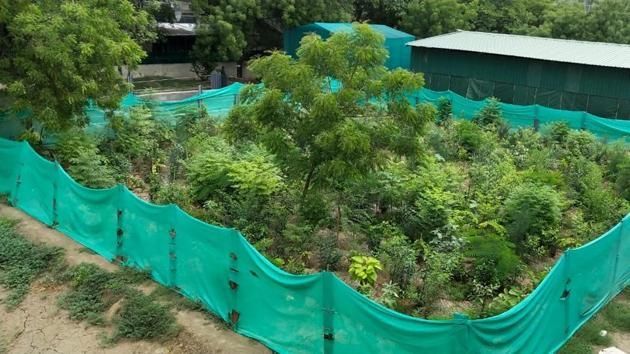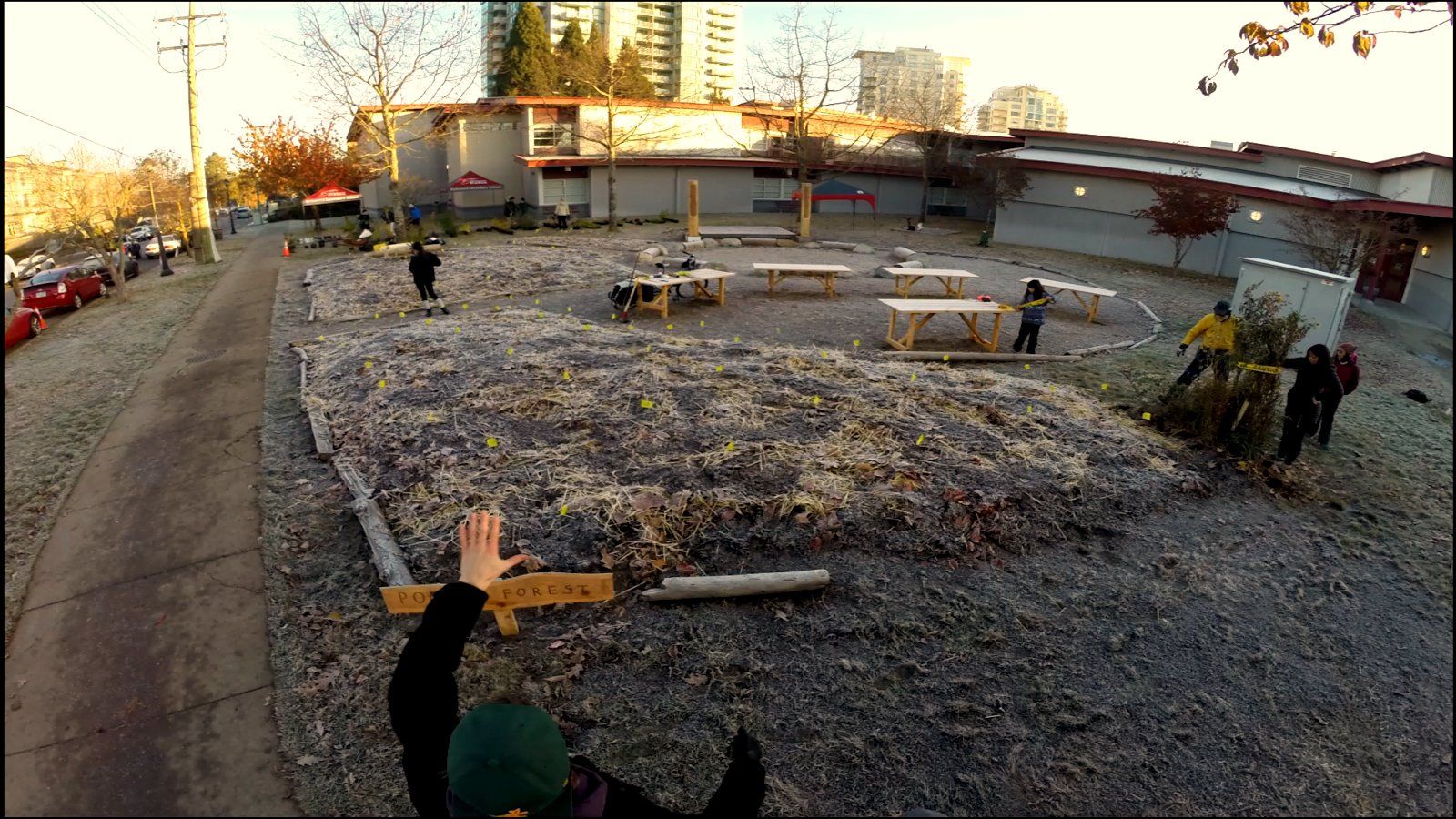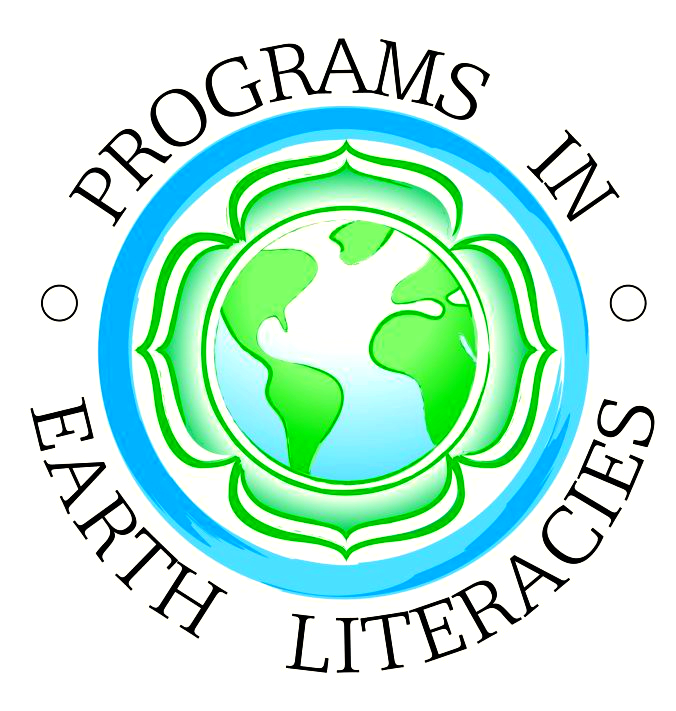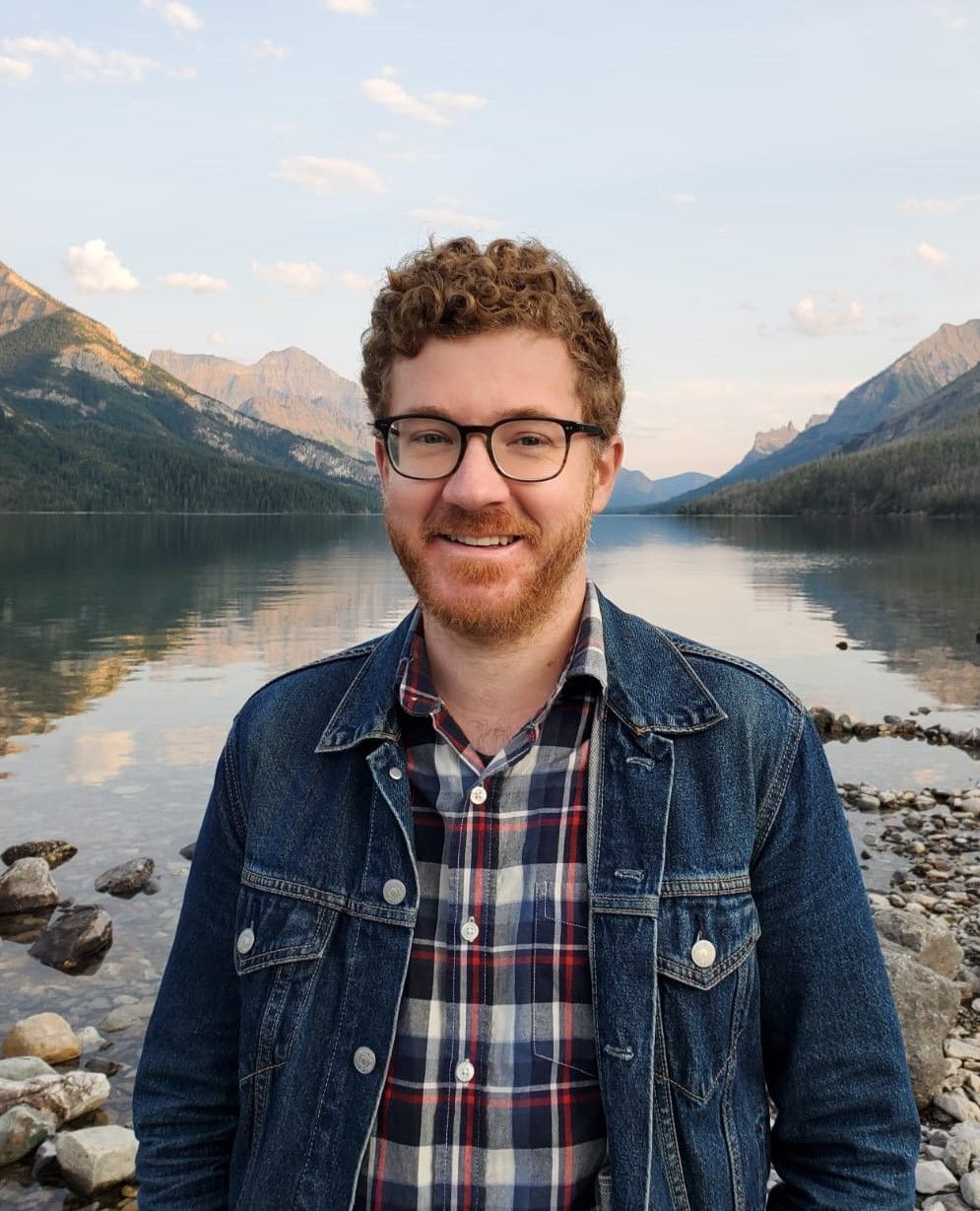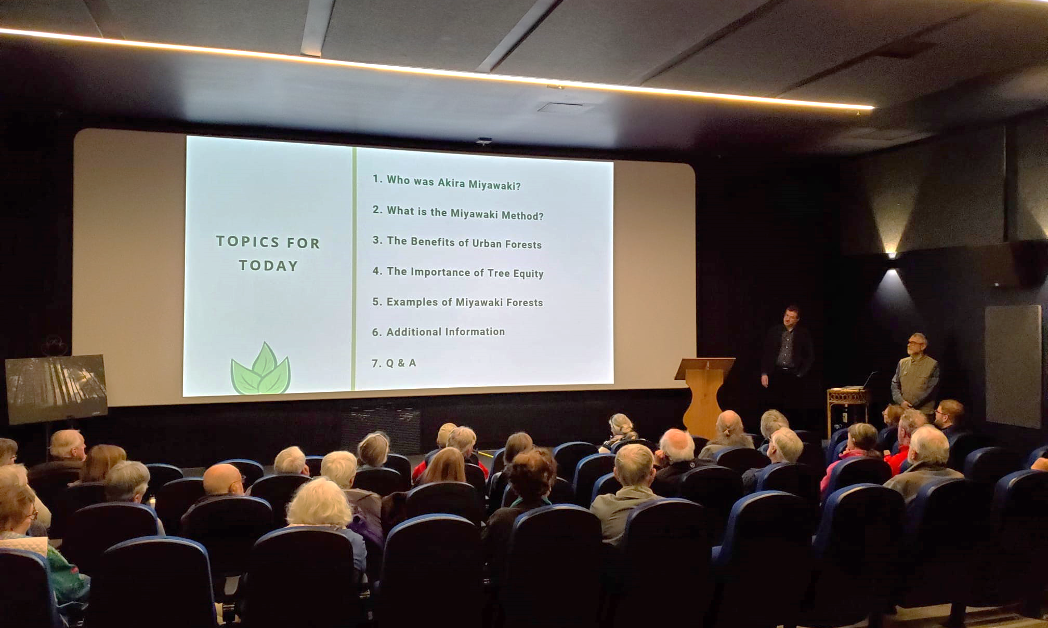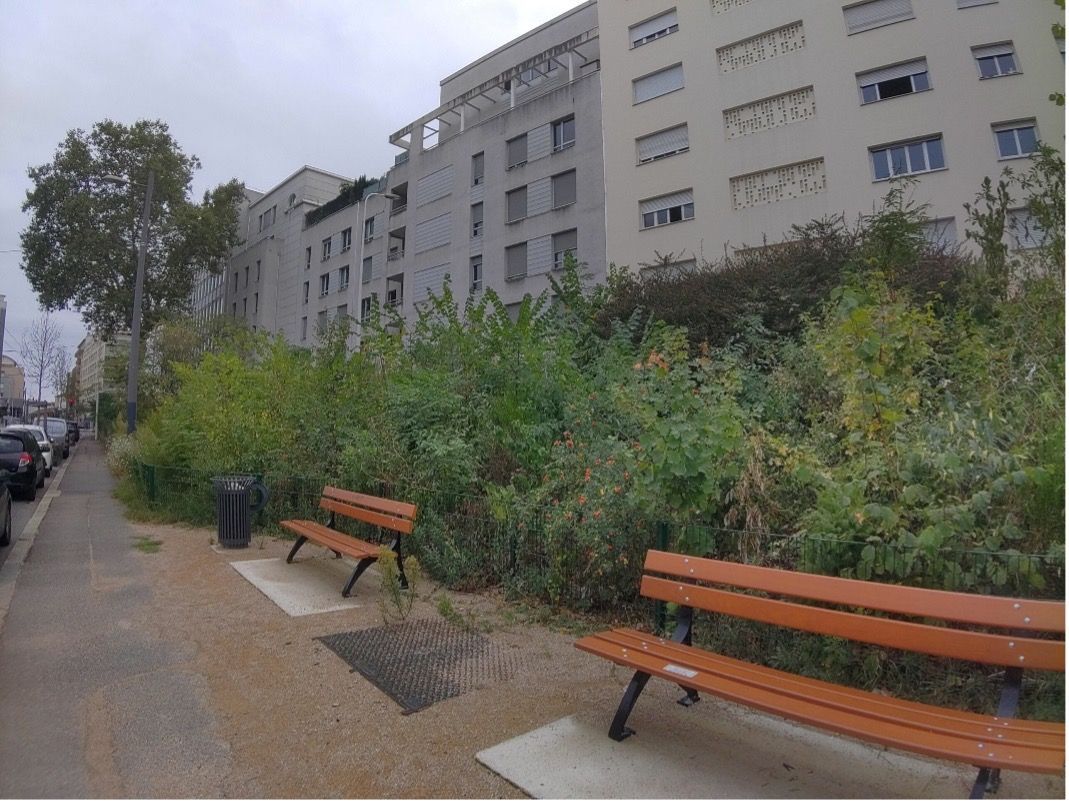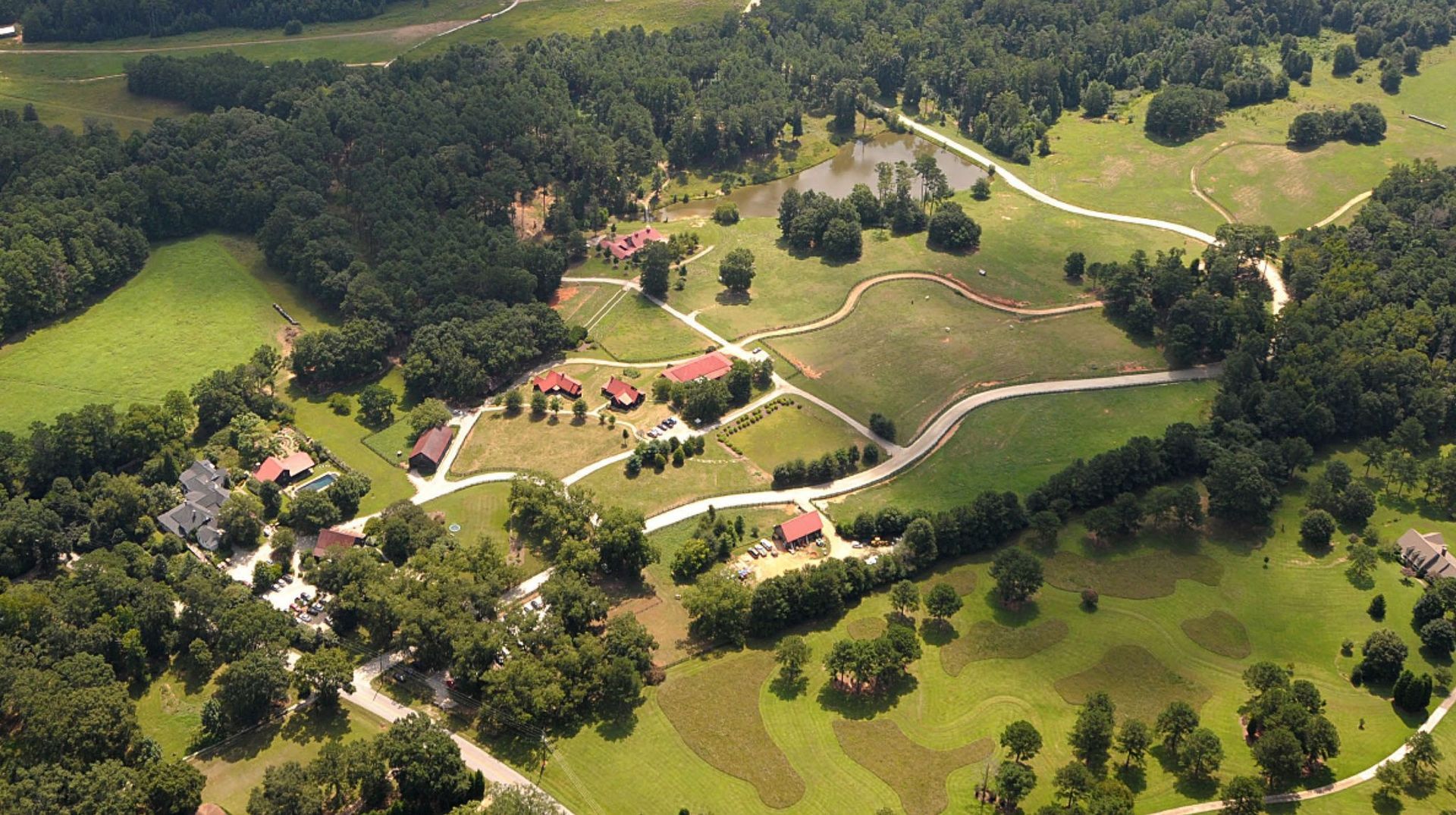Bio: Sean Steele is a writer, educator, musician, and academic. He holds an MA in the humanities from York University and a BA in philosophy and history from Concordia University. He is currently writing a PhD thesis that explores the emergence of the sacred within the context of secular music festivals. His scholarly writing has appeared in Arts and Humanities in Higher Education, The American Studies Journal, and The Journal of Unschooling and Alternative Learning. Sean works as the research lead for Seedlings Forest Education, an organization that provides outdoor educational programs for children. He is an outdoor enthusiast who loves to camp, hike and climb in the forests and mountains of Vancouver Island.
Land-Based Learning & Nature Education - Journeying into Miyawaki Forests - Blog Post 5
Above: Children helping to plant a Miyawaki forest as part of an IVN Nature Education program - Image source
A new Earth Stories Blog exploring Miyawaki Forests
Blog Post #5 with Outdoor Educator Sean Steele
In my last post, I talked about the organization Boomforest and their ongoing efforts to transform small urban spaces throughout France into Miyawaki forests. Boomforest is an organization committed to making positive changes in their communities so that future generations can have opportunities to interact with wild spaces in their everyday environments. Closely aligned with Boomforest’s mission, IVN Nature Education is a Dutch organization that works directly with these future generations.
Led by Daan Bleichrodt, IVN Nature Education collaborates with schools and community organizations to guide children to prepare, plant, and care for Miyawaki forests. Inspired by the creation of soccer fields and other recreational green spaces around schools in the Netherlands, Bleichrodt wondered what other kinds of green spaces could be created for children, parents, and educators. Like me, Bleichrodt stumbled across Shubhendu Sharma’s TED talk about Miyawaki forests. Interested in Sharma’s talk, he learned more about this approach to planting mini-forests. He then started gathering a group of like-minded people and, in May 2015, planted Holland’s first Miyawaki forest in the city of Haarlem. Since then, IVN Nature Educator has planted dozens of Miyawaki forests throughout the Netherlands.
I learned about Bleichrodt’s work with IVN Nature Education in Hannah Lewis’ recent book on Miyawaki forests, where I also learned about Boomforest. In a video chat with Lewis, Bleichrodt said:
“So many kids grow up without nature. That’s scary to me because we have all these big challenges—like climate change, loss of biodiversity, and the plastic soup. Will you protect nature as an adult if you didn’t grow up with it? In 2050, today’s kids will be at least thirty years old, and we need to be carbon neutral by then. So there’s a great urgency to connect kids to nature” (Lewis, 2022, p. 61).
I agree with Bleichrodt’s sentiment. Children today who grow up in urban environments may not be connecting with natural, wild spaces, simply because they do not have access to them. By giving children access to wild spaces, we can open the possibility that they will form a deep and lasting connection to the natural world.
When I was working as an outdoor educator, my goal was to help foster these kinds of connections between children and nature. In the fall we collected leaves on a scavenger hunt of colour. In the winter we built fires to stay warm. In the spring we watched the flowers bloom and created art inspired by these bright colours. These simple activities were in service of having children spend time learning and growing together in a natural environment.
Before I had learned about the approach IVN Nature Education was taking, I was already motivated by the same idea that, as Bleichrodt says, “we know from experience and from research if you manage to forge a connection with nature before the age of twelve years, you will be connected for life” (Lewis, 2022, p. 65). These life-long connections foster an ecological mindset that offer new ways of listening, learning, and growing.
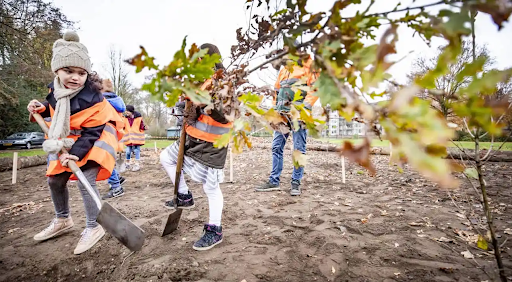
Children helping to plant a Miyawaki forest as part of an IVN Nature Education program - Image source
Last week I attended a virtual conference on Communication Ethics. Facilitated by Royal Roads University in Victoria, the event focused on different ways of listening, communicating, and learning. The final conversation of the conference, titled “Professional Communication in Indigenous Contexts,” brought together Indigenous scholars, journalists, and educators. Their conversation was far-reaching, but at several points it touched on the concept of land-based education. After doing a bit of research, I realized that this was another way to help children foster a life-long connection with their natural environment.
Inspired by IVN Nature Education’s efforts, and encouraged by my experiences spending time in nature with children, I began to explore other ways that I can encourage future generations to feel connected to nature.
Land-based learning is an approach to education rooted in place and focused on traditional methods of understanding our relationship to the land. As defined in a publication by the Samuel Centre for Social Connectedness, a Canadian “think-and-do-tank” founded in 2017, “Land-based learning typically uses an Indigenized and environmentally-focused approach to education by first recognizing the deep, physical, mental, and spiritual connection to the land that is a part of Indigenous cultures.” The Samuel Centre adds that “Each land-based learning program is unique, and therefore some may use different titles, or may not focus on Indigenous knowledge at all.” One of the guiding ideas behind land-based learning is that “learning in an outdoor environment has mental health benefits, improves understanding for active learners, and can help students to develop environmental awareness and a connection to the land.”
This closely parallels my approach as an outdoor educator. It also aligns with the approach taken by IVN Nature Education. Miyawaki forest projects involving children, their families, teachers, and community volunteers offer one small way of activating such land-based learning. Although I have much to learn about this approach, and am still in the early stages of exploring the rich cultural history of many Indigenous groups in Western Canada, I am inspired by helping to create new expressions of land-based learning so that future generations can feel connected to nature. It is this sense of deep connection and communication between people and the land that can foster a sense of stewardship in those who will one day grow up to become leaders and educators themselves.
Resources
Lewis, Hannah. (2022). Mini-Forest Revolution: Using the Miyawaki Method to Rapidly Rewild the World.
White River Junction, VT: Chelsea Green Publishing.
For the latest blog submissions to Earth Stories from Sean, as he documents his Miyawaki Forest Journey (and how you might do the same in your 'backyard'), check our Earth Stories Blog every couple weeks and / or subscribe to the Programs in Earth Literacies Newsletter where new articles will be posted and delivered via email.
